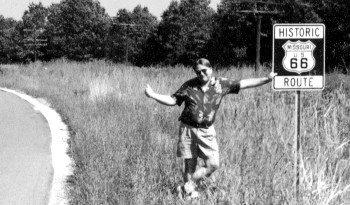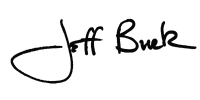| | | |||||||||||||||||||||||||||||||||||||||||||||||||||||||||||||||||||||||
 | ||||||||||||||||||||||||||||||||||||||||||||||||||||||||||||||||||||||||
|
The biggest news that came out of the NHRA event at Las Vegas didn’t have to do with performance or attendance, which is usually the case, but that NHRA decided to change the date for the race next year to October. The reason for the date change is obvious. The management team at “The Strip at Las Vegas Motor Speedway” want to put their NHRA race on during the same time frame as the prestigious SEMA Show, reasoning that having the race at the same time would automatically supply not only more paying customers to fill the additional grandstands which are supposedly going to be added to the 30,000 seats already in place, but with movers and shakers that attend the SEMA Show, give this date a lot of prestige. Thinking about that made me realize that drag racing really doesn’t have a race that is a “happening.” I believe that drag racing desperately needs a marquee event. A race that is more of a happening than just a race. Drag racing needs its own version of NASCAR’s month-long “SpeedWeeks” which culminates with the Daytona 500 or Indy car racing’s Indy 500 held during the month of May which, despite what Andrew Craig or anyone else might think, is for most open wheel fans and racers “The Race.” That’s why F-1 doesn’t schedule a race on top of it. The Knoxville Nationals for sprint cars falls into the same category as a happening that any true fan of sprint car racing has to attend. For many reasons the three above mentioned races are absolutely mandatory events for fans and racers to attend. Entering and winning any of those races can make or break a career and, in fact, to be considered among the greatest of all time a driver must win one of these events. To do so, virtually ensures that he or she will have a ride for life and a prime spot in the history books. As a result sponsors, racers, the media (both print and electronic), and fans plan their year around these races. If a mainstream media outlet can only cover one race, a year they go to one of these. If a publication that doesn’t cover racing wants to get introduced to the sport, they send someone to one of these events. The fans themselves plan vacations around these race happenings and in many instances seats at the track, hotel rooms, camping spaces and even restaurant reservations are made years in advance and passed down from father to son. Unfortunately for drag racing, it currently doesn’t have that kind of event on the schedule. The U.S. Nationals used to be that kind of race, but not any more. In the late 1970’s and early 1980’s Indy was more than a race; it was, if you will pardon the expression, “the Woodstock of drag racing.” I know, because I was one of those who went for a week, camped out around the front gate, or slept 16 in a room or climbed the pit gate after it was locked to go watch Ed Pink helping Prudhomme who was parked on that one piece of asphault in the pits, but we didn’t care because it was the U.S. Nationals!!! It was a unique event that almost forced fans and racers to attend. It used to be a mandatory race for every Top Fuel car in or out of the United States when the Top Fuel fields were 32 cars. They stopped that practice after the 1980 season. It used to be a special race for the Pros because until 1988 the points awarded at the U.S. Nationals were worth 1.5 times as much as points awarded at any other stop on the tour and a racer could make a big move in points. It was, I think, from 1977 to 1984 the only race where you could see fuel bike as an eliminator. Those factors alone ensured every seat and every pit space at the U.S. Nationals would be filled over the Labor Day weekend and that the race would be televised live on a national network. Not any more! NHRA has gradually diluted the U.S. Nationals until it has become, to many people, just another race. If you don’t think so, a look at the thousands of empty seats at last year’s final rounds should convince you. I think there are many reasons for that. Indy simply isn’t NHRA’s best facility anymore. Aside from the “Big Bud Shootout” and one extra day of qualifying, it has become just one more race on the circuit. It is still the U.S. Nationals but as any pro athlete can attest, you can only get by on your reputation for so long and then you have to deliver.
Hell, Indy doesn’t even deliver a really big payday for a Pro racer. At the 1999 U.S. Nationals if a Fuel Funny Car team won the race and the Big Bud Shootout they could have gotten around $185,000 in cash and around another $50,000 in contingency. Top Fuel paid about $100,000 less. Small potatoes when you consider that the winner of the Indy 500 and the Daytona 500 will take home around $1,000,000 (yes, that’s ONE MILLION DOLLARS) each. And, unfortunately, there are a lot of people in the major media who equate the size of a purse to the importance of the event. It’s a sad fact but there are dirt track events in smaller venues that pay as much cash to win a single class as the U.S. Nationals does. If drag racing is going to regain its place as one of the major motor sports alongside NASCAR, CART, and now the WORLD OF OUTLAWS then drag racing has got to have a showcase event for our premier cars and stars. We’ve got to have a race that people who don’t even like drag racing have to attend because it is “The Race.” I believe that is what Bruton Smith had in the back of his mind when he moved the date for the Las Vegas race to the weekend before the SEMA Show. Call me sentimental, but I don’t want the showcase of drag racing to be in Vegas. I want it to be at the most historical location that drag racing has--Indy! I want NHRA to restore the U.S. Nationals to the elite status it once held with the racers and fans as an event rather than just a race. And by the way, I know that NHRA has plans in place to give the old place a serious facelift with stands like those at Bruton Smith’s track. But I’m not sure that upgrading a track has the same effect on a race as it does on a ballpark. The U.S. Nationals is a once a year deal and I think it will take more than a facelift to make it a place where race fans “have to go.”
| ||||||||||||||||||||||||||||||||||||||||||||||||||||||||||||||||||||||||
|
photo by Kay Burk
| ||||||||||||||||||||||||||||||||||||||||||||||||||||||||||||||||||||||||
|
Copyright 1999-2001, Drag Racing Online and Racing Net Source | ||||||||||||||||||||||||||||||||||||||||||||||||||||||||||||||||||||||||




